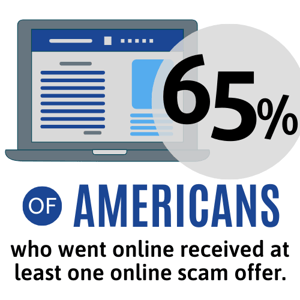.png?width=1000&name=Blog%20Images%20(5).png)
The pillars within this year's National Cybersecurity Awareness Month are Own IT., Secure IT. and Protect IT. We have already talked about Own IT. in a previous blog post and you can read all about it here. Today we are going to discuss the ways that you can “Secure IT.” - IT being your digital profile.
It probably goes without saying that part of securing your data is having and creating a strong password for all your accounts. Chris Whittle, VP of Support at Teslar Software, talked about this at length in the blog post called Passwords, Keys to Your Digital Kingdom. He also mentions the importance of multi-factor authentication (MFA). So be sure to check that post out! But let’s talk about a few other items that you need to be aware of to secure your digital profile.
First, let’s go phishing! You may or may not have heard of this catchy phrase, but simply put it is when a hacker uses email or malicious websites to infect your machine with malware and viruses in order to collect personal and financial information. Pretty scary, huh? Cybercriminals will send you an enticing email with a link that is just begging to be clicked. It may even appear as though the email has come from a legitimate source or even someone you know. These emails also tend to request personal information such as account numbers, passwords, or Social Security numbers. Here are some tips to ensure that you do not fall victim to a phishing attach:

- Play hard to get with strangers – It is best not to respond if you are unsure of who an email came from, and do not click on any links or attachments within the email.
- Think before your act – Is it safe to say that checking our emails has become such a mundane task that we sometimes operate on autopilot when browsing our inbox? So, in a momentary lapse of judgement you may casually open an attachment or click on an intriguing link. Try to remain alert when replying or clicking on links and double check the source that sent the email.
- Protect your personal information – In this digital world we live in, there is a lot about us readily available on the internet. A cybercriminal doesn’t need to do a lot of digging to get some information about where you live, work, etc. Proceed with caution before divulging any additional information.
- Install and update anti-virus software – Make sure that all your computers, phones, and tablets are equipped with anti-virus software, firewalls, email filters and anti-spyware.
Another way that cybercriminals can wreak havoc on your life is through your bank account by gaining access to your checking account and credit cards. The vast majority of Americans do quite a bit of their shopping online. And, just in case you needed a reminder, Christmas is only 68 days away. 😱 According to a poll conducted by Marist College and National Public Radio (NPR), 76% of all United States adults shop online. In addition to that, 25% of those who shop online do so at least once a month, and 16% shop online at least once a week (I personally am an instant gratification shopper![]() ).
).
Here are some even crazier numbers - 37% of e-commerce shopping is done from a desktop, 53% from a mobile device, and 10% from a tablet. That being said, consumers run the risk (a high one at that) of having their information compromised with every “Buy Now” click they make. One of the ways hackers are stealing your card information is through e-skimming. Simply defined, e-skimming is when cyber criminals introduce skimming code on e-commerce payment card processing web pages to capture credit card and personally identifiable information and send the stolen data to a domain under their control. YIKES! So, we encourage you to proceed with caution when buying items online and make sure that the website is reputable.
We have 13 days left in NCSAM and we are going to make the most of it. Be on the lookout 👀 for our next blog post where we will be covering the third key to this year’s NCSAM theme, Protect IT.
Sources:
1. https://niccs.us-cert.gov/national-cybersecurity-awareness-month-20192. https://fitsmallbusiness.com/online-shopping-statistics/
3. https://niccs.us-cert.gov/sites/default/files/documents/pdf/ncsam_eskimming_508.pdf?trackDocs=ncsam_eskimming_508.pdf
4. https://niccs.us-cert.gov/sites/default/files/documents/pdf/ncsam_phishing_508.pdf?trackDocs=ncsam_phishing_508.pdf

Leave a Comment